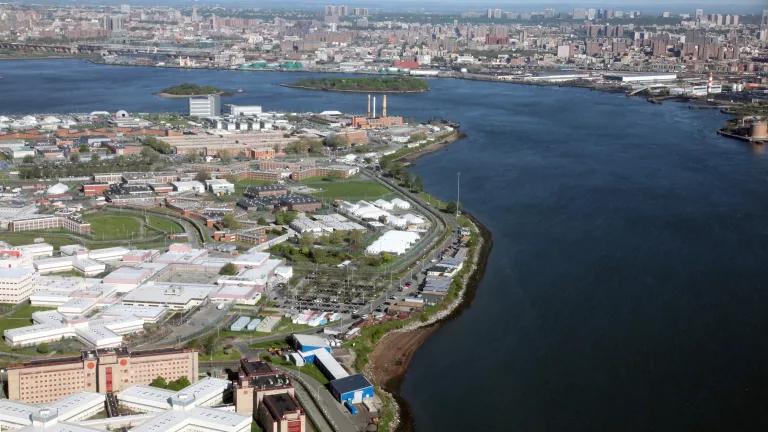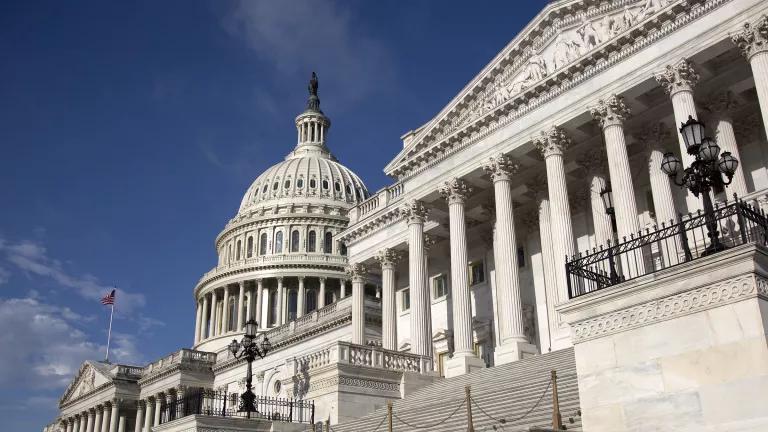An Earth Day “To Do” List for NYC’s Mayor & Council Speaker
We offer six sensible, cost-effective recommendations that will attack the climate crisis, reduce pollution across all five boroughs, and improve the quality of life for all city residents.

April 22 marks the 52nd anniversary of the first Earth Day, when millions of Americans poured into the streets, participated in teach-ins on college campuses, and engaged in civic activities to demonstrate their support for clean air and water, pollution-free neighborhoods, and a healthy planet for all.
As we honor the occasion, we offer six sensible, cost-effective recommendations for New York City Mayor Eric Adams and City Council Speaker Adrienne Adams to advance that will attack the climate crisis, reduce pollution across all five boroughs, especially in over-burdened communities, and improve the quality of life for all city residents.
- Get NYC’s Food Waste Out of Landfills and Incinerators – New Yorkers discard as much as 4,000 tons a day of food scraps, yard waste and food-soiled paper. It’s one third of the entire residential waste stream. But when these organics are buried in landfills, they generate methane – a potent global warming gas. And when sent to incinerators, this trash, with its high moisture content, fouls the burning process; the result – even more air emissions. What is needed without delay is legislation that will phase in universal, mandatory food waste collections at curbside for every city neighborhood. This is how composting collections have succeeded in cities like San Francisco, Seattle and Portland. And to get the ball rolling as the FY’23 budget is finalized, the Council and Mayor should provide funds for food waste collections at every city public school, beginning in September.

- Fund A Strong Watershed Protection Program to Safeguard NYC Drinking Water – NYC’s high quality water supply is funneled into the city from 19 upstate reservoirs as far as 125 miles away. The bulk of this drinking water supply is unfiltered. As a result, the city must safeguard the system through cost-effective measures to prevent pollution from being discharged in the Catskill mountain watersheds that feed these reservoirs. In the next few months, the City’s watershed protection/filtration avoidance plan will be undergoing a five-year review by NYS health and environmental officials to assure consistency with the federal Safe Drinking Water Act. The City plan must provide continued funding for strategic acquisitions of properties around the reservoirs, purchasing parcels from willing sellers to protect especially important wetlands, floodplains and other water-related features. It must also support our upstate partners with programs to rehabilitate and repair septic systems in the watershed, treat septic system waters in our upstate sewage plants, and fund projects that maintain watershed infrastructure and advance sustainable economic vitality. Such investments are necessary to avoid the much more costly and ecologically less desirable option of spending 10 billion dollars or more to build a giant filtration plant that would otherwise be needed to treat this drinking water before it enters city taps.

- Establish a Flood Buy-Out Program to Rescue NYC Residents from Rising Seas – Almost a decade ago, Hurricane Sandy – with its 9-foot storm surge and enormous financial and public health costs – awakened many New Yorkers to the reality that climate change is already affecting us. Hundreds of homes on Staten Island’s north shore were damaged or destroyed. But residents there were left adrift for months until the State finally created a program, ultimately buying over 500 coastline properties so that affected homeowners could recoup their investments and relocate to higher ground. The start-up delays left displaced Staten Island families unsure whether to attempt rebuilding or wait for a buy-out, adding to the suffering. New Jersey’s long-established Blue Acres Buy-Out Program is an ongoing operation that could serve as a model for New York City. The Blue Acres program acquires properties that have repeatedly flooded from willing sellers and converts them into green buffers, protecting upland neighbors and providing recreational opportunities. The Mayor and Council should set up a permanent flood-buy-out office and process, so that the city can begin planning for cost-effective, voluntary buy-outs, recognizing that climate disruptions are here to stay.

- Implement the Renewable Rikers Vision – The 2017 report of the Independent Commission on New York City Criminal Justice and Incarceration Reform concluded that closing the notorious Riker’s Island jail complex was a “moral imperative.” And in 2021, the City Council enacted legislation that calls for the end to incarceration on the island by 2027 and the reuse of the 413-acre parcel for “sustainability and resiliency” purposes. The Renewable Rikers coalition, spearheaded by groups like Freedom Agenda, envisions turning this island of shame into a showplace of sustainability, with a solar array and energy storage, expanded composting and a modern wastewater treatment plant. This green infrastructure would enable to city to close older sewage treatment facilities and highly polluting “peaker” power plants in already overburdened neighborhoods. And the vision includes opportunities for former detainees to obtain training and secure some of the new green jobs that these facilities would create. To achieve these worthy objectives, the City must move forward with its borough-based jails plan, convene the Rikers Island Advisory Committee and advance the forthcoming environmental studies in timely fashion.

- Pass the Skip-the-Stuff Bill to Help Restaurants Reduce Unwanted Trash – Every week, New York City restaurants, through force of habit, distribute millions of plastic utensils and plates; packets of ketchup and mayonnaise; and tiny bags of salt and pepper, etc. to take-out customers. Most of these hand-outs are unwanted and are piled up in kitchen drawers or tossed directly into the trash. This system is both wasteful and costly to restaurants. The solution is simple – enact legislation that would make such take-out items available only upon the customers’ request. When California enacted a similar policy, it found that restaurants were saving $3,000 or more every year. “Skip the Stuff” legislation (Intro 1775-C) that would implement an “only on request” policy for such restaurant take-out items here in New York City was supported last year by a majority of City Council members, including now Speaker Adrienne Adams. Swift passage of this bill would be celebrated from Coney Island to Riverdale.

- Implement the Landmark Commercial Waste Zones Reform Legislation in 2022-23 – The system for collecting waste from businesses, restaurants, and other commercial establishments in New York City has long been broken. Trucks from as many as 90 private carting companies race across the city every night, following irrational and duplicative routes, spewing air pollution and endangering public safety. Many of their workers are underpaid and lack training and protective equipment. Little recycling or composting takes place. And accountability and enforcement are lacking. Local Law 199 of 2019 promises to change all this by dividing the city into 20 waste zones with no more than three carters per zone. To secure a zone contract from the Department of Sanitation, carters will need to meet environmental, labor and safety criteria. Among other benefits, the new system promises to reduce waste truck traffic by roughly 12 million miles a year – same distance as to the moon and back 25 times! The Adams administration and new Sanitation Commissioner Jessica Tisch will score a significant victory for all New Yorkers by ensuring the timely implementation of this historic reform program.



